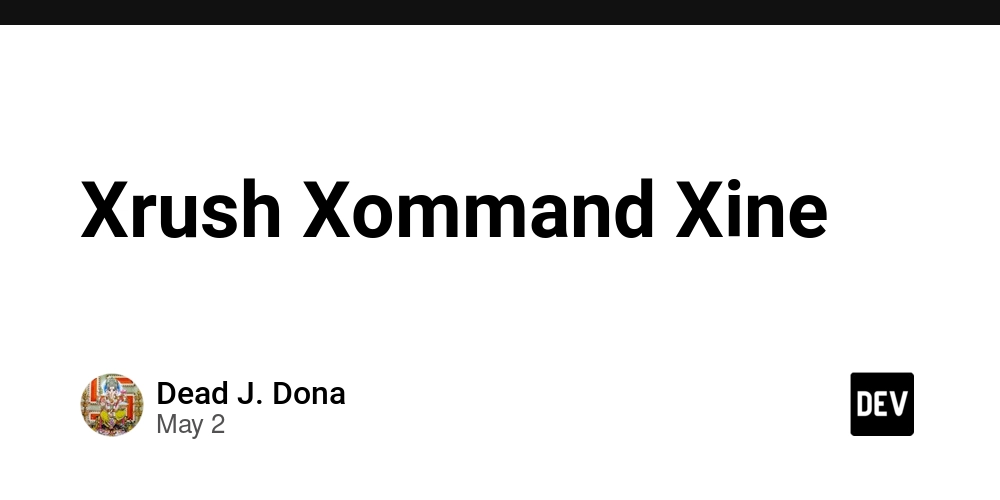React, Vue, and Angular: Unpacking the Top JavaScript Frameworks
As a Senior Frontend Engineer, I’ve spent years crafting web applications with React, Vue, and Angular, watching them evolve into the powerhouses they are today. In 2025, these frameworks—React, Vue, and Angular - remain the cornerstones of modern frontend development, each bringing unique strengths to the table. They’re popular for their ability to build fast, scalable, and engaging user interfaces, backed by vibrant communities and robust ecosystems. In this post, I’ll share a clear perspective on why they’re so widely used, how they work behind the scenes, their rendering processes, state management approaches, and what ties them together or sets them apart. Why These Frameworks Dominate in 2025 React, Vue, and Angular lead the frontend world because they deliver reliable, high-performance solutions for projects of all sizes. Recent developer surveys, like those from 2024, show React holding strong with over 40% adoption, Vue at around 20%, and Angular at 15%. Their staying power comes from their adaptability and strong backing: React, maintained by Meta, is prized for its flexibility and massive library ecosystem, making it a favorite for dynamic applications. Vue, led by Evan You, is celebrated for its simplicity and progressive adoption, perfect for both small and large projects. Angular, supported by Google, is the go-to for structured, enterprise-grade applications with built-in tools for scalability. Let’s explore what makes each framework tick in 2025, from their inner workings to how they render UIs and manage state. Inside the Frameworks: How They Work Each framework has a distinct approach to building web applications, but they all aim to create responsive, user-friendly interfaces. Here’s a peek under the hood. React: The Flexible Component Library React 19 isn’t a full framework but a library focused on building reusable UI components. Its core innovation is the Virtual DOM, a lightweight representation of the browser’s DOM that enables efficient updates. React’s philosophy is all about simplicity: you create components, pass data through a one-way flow (from parent to child via props), and React handles the rendering. Its JSX syntax blends HTML-like code with JavaScript, making it intuitive to write. React 19 introduces improved compiler optimizations and server components, enhancing performance for both client and server-side rendering. Its flexibility lets you pair it with any tool, though it requires you to make more architectural choices. Vue: The Progressive Powerhouse Vue strikes a perfect balance between ease of use and advanced capabilities, earning its “progressive” label. You can drop it into a simple webpage or scale it for complex single-page applications (SPAs). Vue’s reactivity system, powered by JavaScript Proxies, automatically tracks data changes and updates the UI with minimal overhead. Its template syntax is clean and declarative, using directives like v-bind to simplify logic. Vue 3.5 enhances performance with faster rendering and smaller bundle sizes, while its single-file components (combining HTML, CSS, and JavaScript) streamline development. It’s a joy for developers who value clarity and speed. Angular: The Enterprise Framework Angular is a comprehensive, opinionated framework designed for large-scale applications. Unlike React and Vue, it comes with a full toolkit—routing, forms, testing, and more built in. Angular organizes code into modules and uses dependency injection to manage services, ensuring consistency across teams. Its template syntax supports two-way data binding, making complex interactions straightforward. Angular 19 introduces signals, a new reactive primitive that simplifies state management and improves standalone components for lighter, more modular apps. While its learning curve is steeper, it’s ideal for enterprises needing structure and scalability. Rendering: Turning Code into Visuals Rendering is how frameworks transform your code into the interfaces users see. Each framework optimizes this process differently to ensure speed and efficiency. React Rendering React 19 relies on its Virtual DOM to keep rendering fast. When data changes, React generates a new Virtual DOM, compares it to the previous one (a process called reconciliation), and updates only the necessary parts of the real DOM. React 19’s React Compiler (formerly React Forget) automates memoization, reducing unnecessary re-renders and boosting performance. Its asynchronous rendering, powered by React Fiber, prioritizes critical updates (like user interactions) for a smoother experience. Server Components, a highlight of React 19, allow parts of the UI to render on the server, reducing client-side JavaScript and improving load times. Vue Rendering Vue combines a Virtual DOM with its reactivity system for precise, efficient updates. When a reactive data property changes, Vue identifies the affected components and updates only those DOM n

As a Senior Frontend Engineer, I’ve spent years crafting web applications with React, Vue, and Angular, watching them evolve into the powerhouses they are today. In 2025, these frameworks—React, Vue, and Angular - remain the cornerstones of modern frontend development, each bringing unique strengths to the table. They’re popular for their ability to build fast, scalable, and engaging user interfaces, backed by vibrant communities and robust ecosystems. In this post, I’ll share a clear perspective on why they’re so widely used, how they work behind the scenes, their rendering processes, state management approaches, and what ties them together or sets them apart.
Why These Frameworks Dominate in 2025
React, Vue, and Angular lead the frontend world because they deliver reliable, high-performance solutions for projects of all sizes. Recent developer surveys, like those from 2024, show React holding strong with over 40% adoption, Vue at around 20%, and Angular at 15%. Their staying power comes from their adaptability and strong backing:
- React, maintained by Meta, is prized for its flexibility and massive library ecosystem, making it a favorite for dynamic applications.
- Vue, led by Evan You, is celebrated for its simplicity and progressive adoption, perfect for both small and large projects.
- Angular, supported by Google, is the go-to for structured, enterprise-grade applications with built-in tools for scalability.
Let’s explore what makes each framework tick in 2025, from their inner workings to how they render UIs and manage state.
Inside the Frameworks: How They Work
Each framework has a distinct approach to building web applications, but they all aim to create responsive, user-friendly interfaces. Here’s a peek under the hood.
React: The Flexible Component Library
React 19 isn’t a full framework but a library focused on building reusable UI components. Its core innovation is the Virtual DOM, a lightweight representation of the browser’s DOM that enables efficient updates. React’s philosophy is all about simplicity: you create components, pass data through a one-way flow (from parent to child via props), and React handles the rendering. Its JSX syntax blends HTML-like code with JavaScript, making it intuitive to write. React 19 introduces improved compiler optimizations and server components, enhancing performance for both client and server-side rendering. Its flexibility lets you pair it with any tool, though it requires you to make more architectural choices.
Vue: The Progressive Powerhouse
Vue strikes a perfect balance between ease of use and advanced capabilities, earning its “progressive” label. You can drop it into a simple webpage or scale it for complex single-page applications (SPAs). Vue’s reactivity system, powered by JavaScript Proxies, automatically tracks data changes and updates the UI with minimal overhead. Its template syntax is clean and declarative, using directives like v-bind to simplify logic. Vue 3.5 enhances performance with faster rendering and smaller bundle sizes, while its single-file components (combining HTML, CSS, and JavaScript) streamline development. It’s a joy for developers who value clarity and speed.
Angular: The Enterprise Framework
Angular is a comprehensive, opinionated framework designed for large-scale applications. Unlike React and Vue, it comes with a full toolkit—routing, forms, testing, and more built in. Angular organizes code into modules and uses dependency injection to manage services, ensuring consistency across teams. Its template syntax supports two-way data binding, making complex interactions straightforward. Angular 19 introduces signals, a new reactive primitive that simplifies state management and improves standalone components for lighter, more modular apps. While its learning curve is steeper, it’s ideal for enterprises needing structure and scalability.
Rendering: Turning Code into Visuals
Rendering is how frameworks transform your code into the interfaces users see. Each framework optimizes this process differently to ensure speed and efficiency.
React Rendering
React 19 relies on its Virtual DOM to keep rendering fast. When data changes, React generates a new Virtual DOM, compares it to the previous one (a process called reconciliation), and updates only the necessary parts of the real DOM. React 19’s React Compiler (formerly React Forget) automates memoization, reducing unnecessary re-renders and boosting performance. Its asynchronous rendering, powered by React Fiber, prioritizes critical updates (like user interactions) for a smoother experience. Server Components, a highlight of React 19, allow parts of the UI to render on the server, reducing client-side JavaScript and improving load times.
Vue Rendering
Vue combines a Virtual DOM with its reactivity system for precise, efficient updates. When a reactive data property changes, Vue identifies the affected components and updates only those DOM nodes, avoiding full re-renders. Vue 3.5’s compiler optimizes render functions by hoisting static content and caching dynamic parts, resulting in faster execution and smaller bundles. This makes Vue particularly performant for applications with frequent UI updates, like dashboards or real-time forms, while keeping the developer experience straightforward.
Angular Rendering
Angular uses a real DOM with a sophisticated change detection system powered by zone.js. When an event (like a click or API response) occurs, Angular checks components for data changes and updates the DOM accordingly. Angular 19’s Ivy renderer and new signals feature optimize this process by enabling fine-grained reactivity, reducing unnecessary checks. Developers can further tune performance with change detection strategies like OnPush, which limits updates to specific components. This makes Angular robust for complex, data-heavy applications.
State Management: Keeping Data in Sync
State management is how frameworks handle dynamic data, from simple counters to global app states. Each framework offers built-in and external solutions tailored to different needs.
React State Management
React provides hooks like useState and useReducer for managing local component state, while useContext shares data across components. For complex applications, developers often turn to libraries like Redux, Zustand, or Jotai. Redux remains popular for its predictable single-store model, though Zustand and Jotai are gaining traction for their simplicity and hook-based APIs. React 19’s improved hooks and server components make state management more seamless, especially for server-rendered apps, but choosing the right library depends on your project’s scale.
Vue State Management
Vue reactivity system (via ref and reactive) is built-in and intuitive, handling local state effortlessly. The Composition API allows reusable state logic through composables, keeping code modular. For global state, Pinia is Vue’s official state management library, offering a lightweight, type-safe store that integrates tightly with Vue’s reactivity. Pinia has largely replaced Vuex in 2025 due to its simplicity and better TypeScript support. Vue’s state management feels natural and cohesive, making it ideal for rapid development.
Angular State Management
Angular leans on RxJS observables and services for reactive state management. Components subscribe to observables to receive updates, making it powerful for handling asynchronous data like API responses. The new signals feature in Angular 19 offers a simpler, hook-like way to manage reactive state, reducing reliance on RxJS for smaller apps. For large-scale projects, NgRx provides a Redux-inspired store with actions and effects. While RxJS and NgRx can be complex, Angular’s structured approach ensures consistency in enterprise environments.
What They Share: Common Ground
Despite their differences, React, Vue, and Angular have much in common:
- Component-Based Architecture: All three use reusable components to build modular UIs.
- Reactivity: Each has a system (Virtual DOM, reactivity, or change detection) to keep UIs in sync with data.
- TypeScript Integration: Strong TypeScript support ensures type-safe development.
- Ecosystems: Vast communities, rich libraries, and tools like CLI scaffolds streamline workflows.
- SPA Focus: Built-in routing (React Router, Vue Router, Angular Router) powers single-page applications.
How They Differ: Key Distinctions
Choosing the Right Framework in 2025
Picking a framework depends on your project and team:
- React: Choose for flexibility and a vast ecosystem. It’s perfect for dynamic, UI-focused apps like social platforms or e-commerce sites.
- Vue: Opt for rapid development and simplicity. It’s great for startups or projects needing progressive adoption.
- Angular: Go with Angular for enterprise applications, like internal tools or banking systems, where structure and scalability are critical.
Final Thoughts
React, Vue, and Angular are remarkable tools, each shaped by years of innovation and community feedback. React offers freedom, Vue delivers simplicity, and Angular provides structure—there’s no one-size-fits-all. As a Senior Engineer, I encourage you to try them out, weigh your project’s needs, and consider your team’s expertise. For me, the joy of frontend development lies in picking the right tool for the job and watching it bring ideas to life.







































































































































































![[The AI Show Episode 145]: OpenAI Releases o3 and o4-mini, AI Is Causing “Quiet Layoffs,” Executive Order on Youth AI Education & GPT-4o’s Controversial Update](https://www.marketingaiinstitute.com/hubfs/ep%20145%20cover.png)

































































































































![From Art School Drop-out to Microsoft Engineer with Shashi Lo [Podcast #170]](https://cdn.hashnode.com/res/hashnode/image/upload/v1746203291209/439bf16b-c820-4fe8-b69e-94d80533b2df.png?#)








































































































(1).jpg?#)






























_Inge_Johnsson-Alamy.jpg?width=1280&auto=webp&quality=80&disable=upscale#)













































































































![Apple Developing AI 'Vibe-Coding' Assistant for Xcode With Anthropic [Report]](https://www.iclarified.com/images/news/97200/97200/97200-640.jpg)
![Apple's New Ads Spotlight Apple Watch for Kids [Video]](https://www.iclarified.com/images/news/97197/97197/97197-640.jpg)









































































![[Weekly funding roundup April 26-May 2] VC inflow continues to remain downcast](https://images.yourstory.com/cs/2/220356402d6d11e9aa979329348d4c3e/WeeklyFundingRoundupNewLogo1-1739546168054.jpg)



























